You might be aware that almost five billion people around the world use social media, but did you also know that a whopping 77% of companies are active on a variety of social media platforms?
Facebook alone accounts for 60 billion business pages!
These figures are not just an indicator of how popular—and effective—such channels are for businesses but also illustrate another fact: with so many businesses using these platforms, the chances of a social media crisis skyrocket.
When a crisis hits, the consequences can be disastrous. Fear not though—you can prevent these potentially catastrophic results with one simple tool: a solid social media crisis communication plan.
Keep reading our guide to find out what this is and how to create one for your company.
The importance of effective social media crisis communication for businesses
Think about it: you likely have a crisis communication plan for several different aspects of your business to minimize the chances of a sudden issue potentially spiraling out of control. So, if your company is active on social media, it only makes sense to put together a similar plan of action in case something goes awry on Facebook, Instagram, or the like.
With a social media crisis communication plan, you’ll be better prepared to:
- Tackle any unforeseen hurdles that may crop up.
- Get your entire team on board and ready to take swift action.
- Address and resolve the crisis more quickly and efficiently.
- Protect your brand’s image and reputation and the overall health of your business.
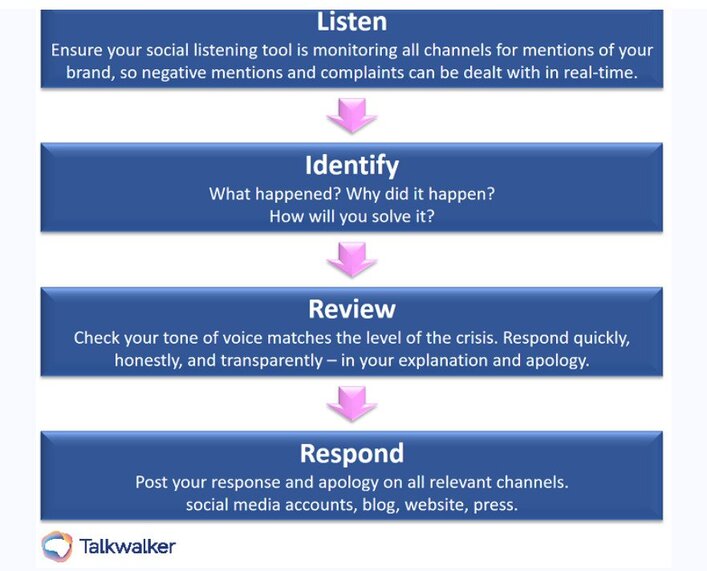
Examples of social media crises
Let’s now look at some common ways a social media crisis can occur.
Negative posts from dissatisfied customers
By far the most widespread type of crisis is when an angry customer’s negative post blows up across your channels. After all, the “social” portion of “social media” implies that users go on these platforms for a reason: to socialize, share, and communicate.
If one particularly unhappy or frustrated customer writes a terrible review of your company, and others who feel the same happen to read that post, then your reputation could collapse as quickly as dominoes.
Company data breaches and hacking
A less frequent—though certainly not less disruptive—type of social media crisis is when your company falls victim to data breaches, hacking attacks, or other cybercrimes.
If you experience a loss or breach of customer data, this could taint the trust and good faith of even your most loyal customers.
Campaign backlashes and controversies
More and more brands globally are now embracing inclusivity, diversity, and sustainability when creating their online marketing campaigns, but some still make embarrassing faux pas, especially on social media.
Topics that might be the object of a campaign backlash or controversy include gender roles, racial stereotypes, or greenwashing.
Misinformation or fake news about the company
Another absolute no-no when it comes to engaging in conversation on social media is spreading fake news or misinformation about your company. This could be anything from falsely reporting your financial results to lying about your environmental impact.
Abusive or hateful comments from trolls or competitors
Perhaps the single most challenging element of being on social media is having to deal with so-called “trolls”.

Protect your brand on social media
Automatically hide or delete comments from trolls on Instagram and Facebook (on organic posts and ads) – with an all-in-one social media tool.
Also dubbed “online bullies”, these people either engage in one-off abusive or hateful comments or open entire accounts created with the sole intention of attacking others on social media.
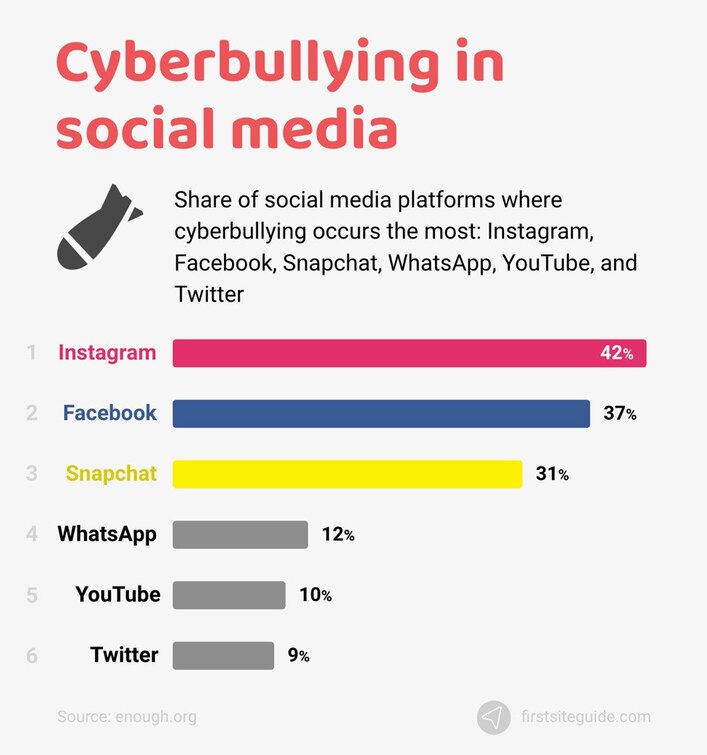
How to create a social media crisis communication plan
Now you know what the most common types of social media crises are, here’s how you can build a bulletproof crisis plan for your company.
Use social media monitoring to detect signs of crisis
Being prepared to identify a potential crisis before it happens is crucial to your plan—and what better way to do this than by keeping a close eye on what people are saying about you on social media?
With a social media monitoring tool, you can achieve exactly that, with results available at your fingertips and in real-time.
Listen and engage with customers actively
Another thing you’ll want to do is be active on your social channels, as this keeps you up to speed with anything problematic that might crop up. Check your DMs every day, respond to public comments, and engage with your audience on a regular basis – particularly when you’ve just launched a new product or service and are marketing it on social media.
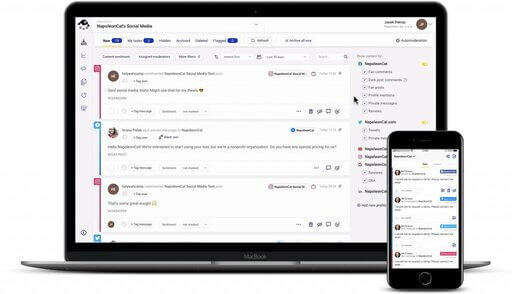
Manage all your social media conversations from a single inbox
Gather and respond to comments, messages, and reviews from multiple social platforms. Give timely responses without switching between accounts, tabs, and apps – with an all-in-one social media tool.
If you are, for example, a business phone provider promoting your new call center management platform, consider posting an educational carousel that begins with “What is call center management?” and delves into why your new tool is so effective. Don’t just post and forget, though – keep interacting with your followers in comments.
Respond promptly to any questions or comments they may have, and act quickly if they have any complaints or uncover any issues with your solution.
Set clear response protocols and escalation methods
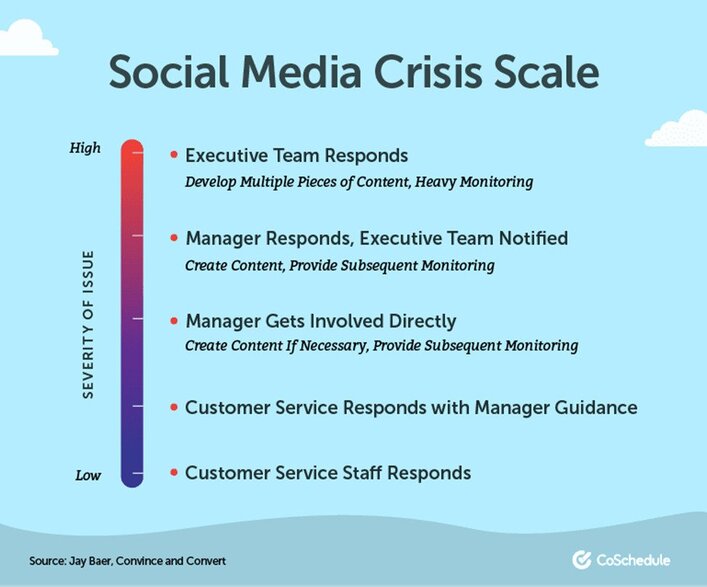
Not every minor hiccup will escalate into a full-blown crisis, so make sure you have a hierarchy in place to help you and your team categorize incidents and match them with the most adequate response.
Respond promptly and avoid crisis delays
If you’ve made it your unique selling proposition (USP) to deliver excellent, around-the-clock customer service, but you fail to respond quickly when a crisis happens, you have a problem with inconsistency.
When a crisis happens, your best bet is always to take action right away.
Apologize and take accountability if you’re at fault
Sometimes, the truth is that you did mess up. If that’s the case, the best thing to do is publicly apologize on your social media channels—even better if you do so with a video where you speak from the heart.
Align your social media with your PR strategy
Misalignment can cause more than misunderstandings. It can sometimes turn into a real crisis— and this can quickly blow out of proportion on social media platforms, where literally billions of humans interact every day. Therefore, ensuring your entire marketing, PR, and social media strategies are aligned is paramount to your social media crisis communication plan.
Enable real-time alerts for crucial keywords or mentions
Also, select certain keywords that you think might be “red flags” for an upcoming social media crisis and leverage automated tools to enable real-time alerts whenever they pop up on your social channels.

Get automated notifications whenever a worrisome comment pops up
Set up email alerts for any “red flag” keywords appearing in comments on your social media organic content and ads. Automatically delete spammy and inappropriate content – with an all-in-one social media tool.
Social media crisis communication best practices
If you want to avoid a social media crisis for the foreseeable future, check out some of the best social media practices below.
Stay transparent and only delete content that violates guidelines
Deleting every single negative comment you receive may be tempting, but it will only backfire as it will make you come across as a dishonest company that doesn’t really care about what its customers think.
As frustrating and unfair as it may feel, deleting a post from an annoyed customer who wrote that your newest delivery service is “cr🌸p” won’t make you look good. That same customer is likely to notice that you removed their comment and take their complaint elsewhere (and potentially make it even more negative).
Instead, set a clear policy regarding what type of content should be removed. This, generally, should include content that violates a platform’s guidelines or is abusive, hateful, or discriminatory in some way.
In some cases, it may be sufficient to hide comments. Read this article to learn more.
Conduct a post-crisis review and improve your communication plan accordingly
As with any other challenge your company may have encountered in the past, there’s always something to learn from a social media crisis, as well as the way you handled it.
Therefore, take some time to gather your social media team after things have cooled down and conduct a full post-crisis review to identify ways to enhance your communication plan in the future.
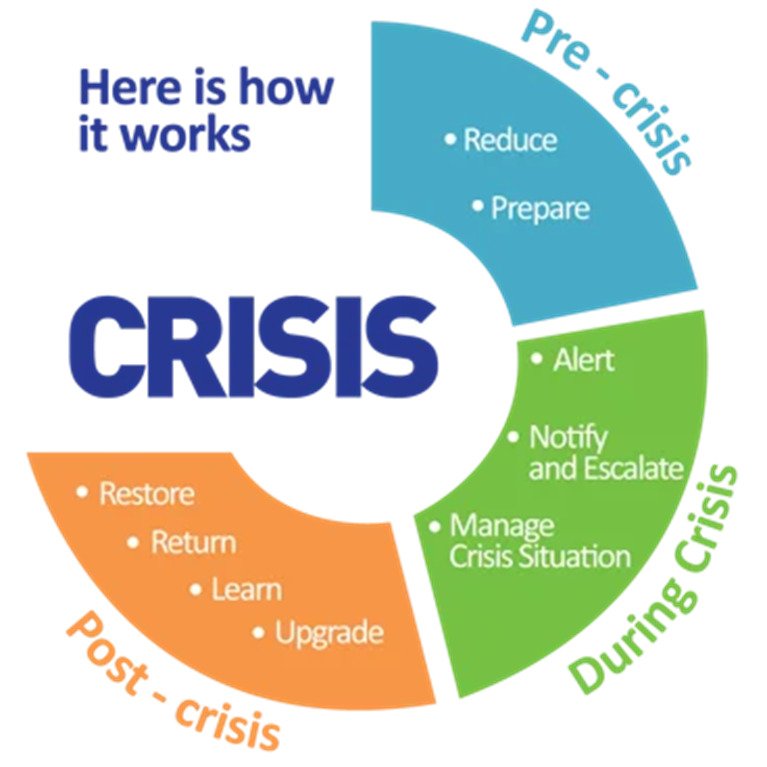
Use pre-approved crisis response templates for consistency
Social media templates aren’t just useful when it comes to organizing and categorizing your monthly Facebook post ideas – they can come in very handy for crisis response purposes, too.
A pre-approved crisis response template should follow a predefined structure, include on-brand elements, and be shared with your entire team. You want people to be able to access this easily so they can act fast and consistently if a crisis occurs.
Key takeaways
With billions of businesses around the world turning to social media platforms to seek out new customers and connect with current ones, the next social media crisis is only ever just around the corner.
In this guide, we discussed what a social media crisis is, reviewed some of the most common types, discussed steps to implement to prevent them (or tackle these if it’s too late), and outlined best practices to follow when engaging with your audience on social media.
Now you have the lowdown on how to craft a solid social media crisis communication plan, you’re in a much better place to protect your company moving forward.
If you need a comprehensive social media crisis communication tool, we highly recommend you test NapoleonCat completely for free – no credit card required 😉
You may also like:
- The Best Social Media Crisis Management Tool
- Support Your Team With a Social Media Moderation Tool They Deserve
- The Essentials of Google Reviews Moderation
- The Best Facebook Moderation Tool for eCommerce
- How to Manage YouTube Comments for Multiple Channels
- Why You Should Automate Facebook Ad Comment Moderation
- How to Monitor Social Media for Negative Reviews and Protect Your Brand Reputation
- How to Build a Community on Social Media
- The Best Social Media Customer Engagement Tool
- How To Protect Your Brand from Instagram Trolls




